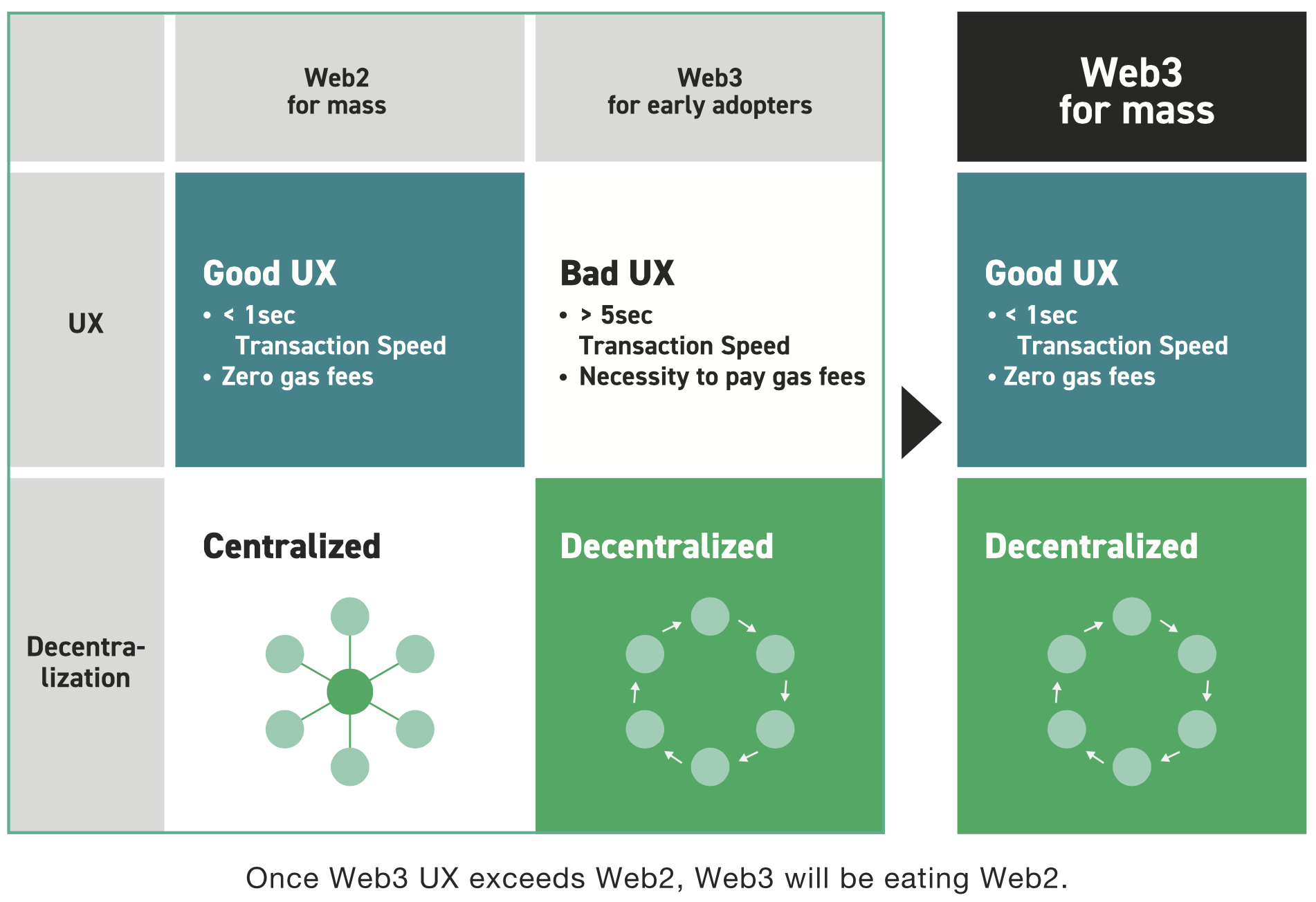3-4. Requirements for a Gaming Blockchain to reach Mass Adoption
The Web3 Dilemma
 As a result of decentralization, many of the current Web3 products have a poor user experience due to the need to pay for gas and slower processing speeds compared to Web2 products. If this Web3 dilemma can be resolved, we can expect an irreversible migration of users from Web2 centralized products to Web3 decentralized products. We are solving this Web3 dilemma from two sides, end-users, and game developers.
As a result of decentralization, many of the current Web3 products have a poor user experience due to the need to pay for gas and slower processing speeds compared to Web2 products. If this Web3 dilemma can be resolved, we can expect an irreversible migration of users from Web2 centralized products to Web3 decentralized products. We are solving this Web3 dilemma from two sides, end-users, and game developers.
User Experience for Mass Adoption
Many of the current dApps have significant user experience (UX) challenges that hinder mass adoption. We, blockchain experts who have confronted this problem since 2018, have concluded the following three answers.
Zero Gas Fees
The issue is not whether the gas fee is high or low, but the need to pay gas fees and the need to set aside some reserves for gas fees are obstacles. For most users, obtaining tokens for gas is a big hurdle, and it is a significant factor preventing mass adoption. Therefore, it is essential to eliminate gas fees to welcome the casual audience into blockchain games.
Instant Transaction
Fifteen seconds of transaction time would be tremendous stress when playing a game. Even taking one second for a transaction is too slow and stressful for the masses who enjoy mobile, PC and consumer games. Transaction speed needs to be as instantaneous as Web2 products.
Scam Resistance
The current public blockchains have great products, but on the other hand, many scams or inferior products exist, putting users' assets at risk. These threats need to be eliminated for the average user to feel comfortable entering blockchain games.
Developer Experience
There are several reasons why it is difficult for traditional game developers to start building blockchain games.
Operational Aspect - Permissionless and Permissioned
Traditional corporations consider it risky to use a public blockchain which all kinds of users, companies and DAOs use. This risk includes not only security risks but also reputational risks. The current blockchains host not only valuable dApps, but also many scams. Operating dApps in a full permissionless environment is too much risk for these companies and developers.
Development Aspect - Developer Experience
Blockchain engineers prefer EVM-Compatible blockchains because of the technical assets accumulated by Ethereum, the availability of great OSS tools, and the opportunity of learning cutting-edge development languages. In addition, developing dApps on Layer 2 is relatively easy due to instant transactions.
Design Aspect - Flexible Design of FT/NFT
When developing blockchain games, implementing Fungible Tokens (FT) and Non-fungible Tokens (NFT) is essential for building an ecosystem. The current FT/ NFT standard on the blockchain makes designing a gaming ecosystem highly complex, as it is difficult to control the supply using in-game coins to avoid a dump, or to implement NFTs for IP protection purposes. Therefore, there is a need to provide a choice of FT/NFT implementation models that allow more flexible design for game operators.